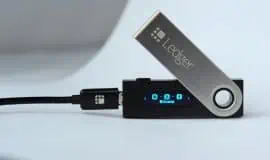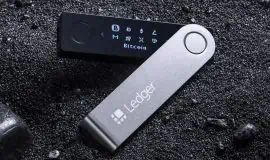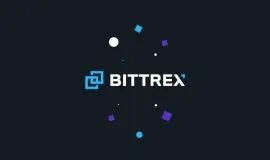Now that cryptocurrencies are becoming more and more popular, the entire world is beginning to realize their huge potential thanks to the secure, scalable and low-cost model of technological applications.
We’ll be going through the essential terms of the blockchain industry and hopefully, they will help you get a deeper understanding of how a blockchain works and how it powers the vast number of cryptocurrencies relying on it.
The Ultimate Blockchain Terminology Guide
All of these terms are frequently used as they stand at the core of blockchain technologies and some of them you might already be familiar with. However, all of them are important, especially if you’re a cryptocurrency trader eager to understand what’s happening under the “hood”.
Altcoin
Altcoin refers to any cryptocurrency that’s not Bitcoin.
Bitcoin
Bitcoin is the most popular and well-known cryptocurrency. It’s a decentralized global peer to peer network that doesn’t have a central authority to control it. It’s also an open-source coin that includes a wallet and transaction security.
Blockchain
A blockchain is a type of data system that employs a decentralized network to create a public ledger of transactions. As its name suggests, it’s made of blocks and new ones are created as transactions between users are validated.
The blockchain network is secured by cryptography and it’s currently being used for various purposes such as data and currency transfers, as well as ICO funding.
Block
Blocks are files that store network-related data just like the pages of a ledger.
Blocks are synonymous with digital pages in a ledger, also known as a record keeping book. These files store unalterable data related to the network.
Dapp
Dapps are distributed-apps, a new type of software architecture that is powered by blockchain technology. Dapps have decentralized data and source code storage which means they will always be online since they don’t rely on just one server.
Farmer
All the computers connected to the blockchain represent individual nodes containing a copy of the blockchain. While a node is mining cryptocurrency it keeps performing new transactions and committing them to the blockchain.
A blockchain farm is a group of computers connected over a network and mining multiple cryptocurrency transactions at the same time.
Hash
Hash is an algorithm used to encrypt data contained in a blockchain’s block. Each block has a unique hash and its security is directly proportional to its complexity, although this also increases the encryption time.
Node
The node is what connects a computer to the blockchain network. It contains a full copy of the blockchain and is also used to validate and communicate transactions.
Miner
A blockchain is maintained through validation using a miner. Miners rely on hash power to solve mathematical equations which result in verified data strings that are added to the blockchain.
The first miner that verifies a block receives a new token as a reward. Since all new blockchain blocks contain data from the previous blocks, it would be extremely difficult to return and alter a block so tampering is nearly impossible.
Mining
Mining is the process through which miners validate new transactions and record them to the public ledger. The reward for solving complex mathematical problems consists of new tokens or transaction fees.
It’s a process that requires a lot of computing power and miners discover new blocks every day.
Proof of Work (PoW)
Once a miner solves a difficult mathematical problem the solution is called Proof of Work (PoW). As its name suggests, PoW demonstrates the miner’s time and effort spent on solving the problem. Each individual block in the blockchain needs a PoW to be validated.
Proof of Stake (PoS)
Proof of Stake (Pos) is an alternative solution to PoW. PoW requires computational work while PoS accomplishes distributed consensus by choosing the creator of the next block using various combinations of random selection and proof of ownership.
Fork
A fork represents the creation of a perpetual alternative version of the blockchain. This means two blocks are created at the same time but in different areas of the network.
There are two parallel blockchains created but only one becomes the winning blockchain, determined by the users’ majority vote.
Public/Private Key
A public key is a cryptographic key that can be accessed by anyone and used to encrypt a message. The public key is assigned to a certain user (the message recipient) just like the private one.
Nevertheless, the private key is accessible only to its user and required to decrypt the message
Address
A blockchain address is similar in concept to a bank account, email or home address. It is used to identify a certain user in the blockchain while providing complete anonymity.
Unlike other types of addresses, the blockchain already contains all the possible addresses that can be created although only released via mathematical extraction.














